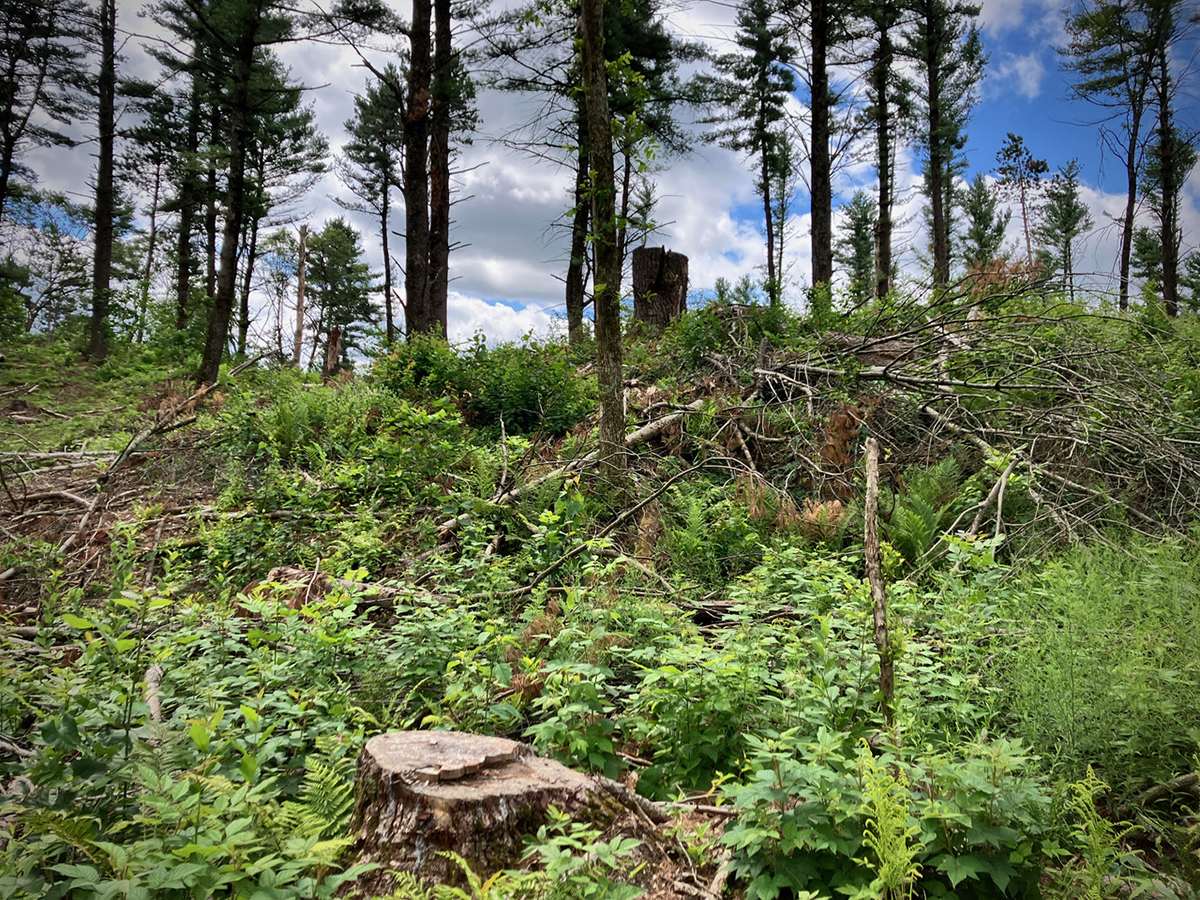I recently found myself searching out landmarks and familiar sights from 40 years ago. Driving through Steven’s Point Wis., my old college town brought back a lot of memories. The town has changed over the decades. Many of the places that were around when I last resided there were now either old and dilapidated or gone and replaced by something new. Nostalgia can be a bittersweet emotional experience.
Perhaps forsaking the town and exploring my favorite natural areas would be a better method for satiating my nostalgic sweet tooth. When I was an undergraduate at University of Wisconsin-Stevens Point’s (UWSP) College of Natural Resources (CNR), I would often escape to a little-used public hunting and fishing area along a small river known for its population of brook trout. I first learned about it while on a field trip in a forest measurements class. In the nearby woods, beginning forestry students would cruise timber and learn all the ins-and-outs of calculating tree size and density, basal area and board-feet per acre. The memories of that mathematical exercise weren’t the reason I was longing to return. The trout stream was beckoning me. I had fished it a lot when I was younger. I never caught much, but the memories of the rippling riffles and placid pools were enchanting to both fish and student.

An area of recent timber harvest in eastern Portage County, Wis. Some trees are left to naturally re-seed the forest after a timber harvest.
MIKE MILLER
Hallowed grounds
As I was navigating my vehicle along the back roads of rural central Wisconsin, I was looking for a gravel road that used to take me to a chain gate marked by a rusty, bullet-ridden sign that simply stated “WDNR Public Hunting and Fishing Grounds.” Forty years later, the road was now paved and the chain gate was replaced by a parking lot and landscaped entrance complete with full signage and a long list of what amenities are available to visitors. This welcoming approach clashed with my nostalgic view of the way WDNR used to operate, but what was parked in the lot did bring back a fond memory … A rusty blue bus with peeling stick-on letters declaring “UWSP-CNR.”
When I was in college, the blue busses were likely surplus from the Korean War era. These new-old busses must be from a later line of military surplus, adorned with a later generation of rust and blue paint. They evoked memories of bone-jarring trips down gravel roads with a professor grinding gears as they tried to see how many undergrads could lose their lunch before their destination was reached.
New life
I parked by the “blue-beast” and saw a trail marked with blaze orange flagging and figured that the occupants must be out calculating how many 2x4s could be produced in the forest down the lane. A short hike in and there they were: Students festooned in boots, hard-hats, and the ubiquitous “cruising vest” adorned with all manner of measuring tools; diameter tapes, clinometers, measuring chains and calipers. Those were all familiar to me. New to me, and seemingly out of place, were the GPS receivers, satellite dishes, handheld computers and other modern gadgets. Worlds collided under a canopy of pine needles.
A gray-bearded gentleman wearing a Tilley Hat saw me and ambled over. I am immediately feeling like a young student who walked into class an hour late. As it turns out, he is at least a decade younger than I am, but he is indeed the professor in charge of this crew. His students were out determining forest productivity and predicting when the best time to harvest the forest will be. I chuckle and related to him that more than 40 years ago I was among the students doing the same exercise. As I looked around the forest, the trees looked the same size and age as when I was there decades ago.
Back to reality
The forest I remembered was last logged in 1924, so surely these trees must be 100 years old. I asked the professor about the student’s insights and what predictions they had for the forest’s fate. He said that the trees were about 40 years old, and the students predicted that the best time to harvest them would be in another 40 years.
Then it dawned on me … I’m in the wrong part of the woods. This is not the forest my class measured.
I asked the prof if there were other forest tracts that would be aging at about 100 years. He said that forests of that age would be about a quarter mile south of where we were, and he pointed down a trail towards them. As I left, he stopped me and said, “If you were cruising timber 40 years ago down that way, I’m afraid that what you will find will not be the same. That was all logged off last winter.”
Down the trail, the reality sinks in. The academic exercise of the student evolved into the existential threat to forests throughout the world. We need wood to build things, and wood comes from forests. The forest I knew is gone. I always knew that it was destined for a timber harvest, but I never really thought that it might happen in my lifetime. That’s the trap of nostalgia … it is focused on the self. The litmus of a nostalgic emotion is how a historical stimulus makes you feel. How does the forest “feel” about me? When we become nostalgic about nature, we walk a knife’s edge between deepening our sense of place in the natural world and ignoring the realities of an environment filled with dynamic and ever-changing forces. Some of these changes occur naturally, others are human caused.
As I sit on a huge stump of what was once a century old white pine. What is left of the forest I knew whispers to me … “Welcome back. It’s been a long time since you were here. I’ve changed a bit, but I hope you will take some time to get to know me again as I grow. Let’s do this journey together.”


1 comment for “Nature Rambles: Nature of nostalgia reveals reality of our environment”
Recent Comments